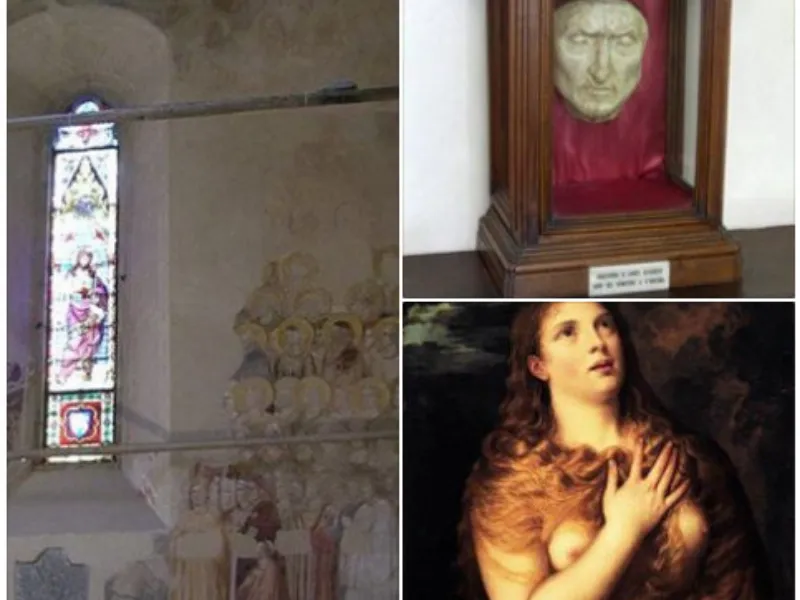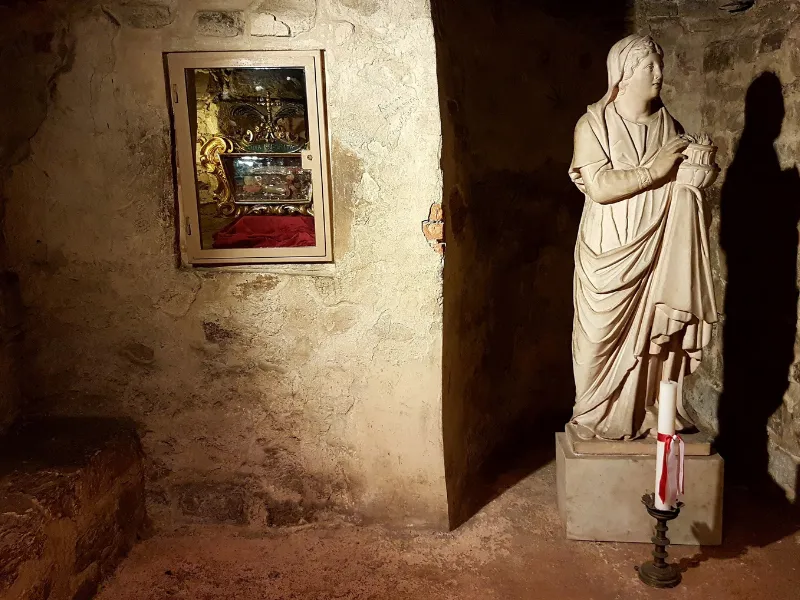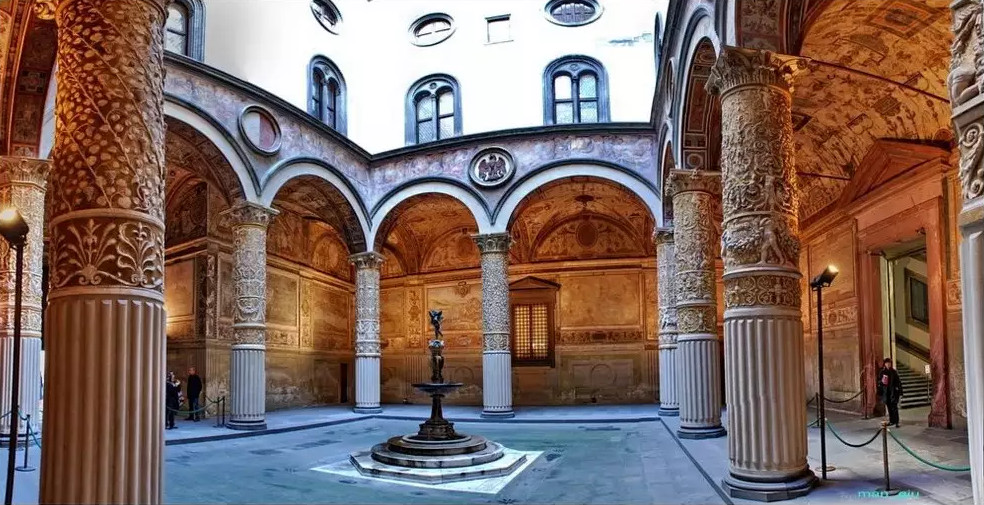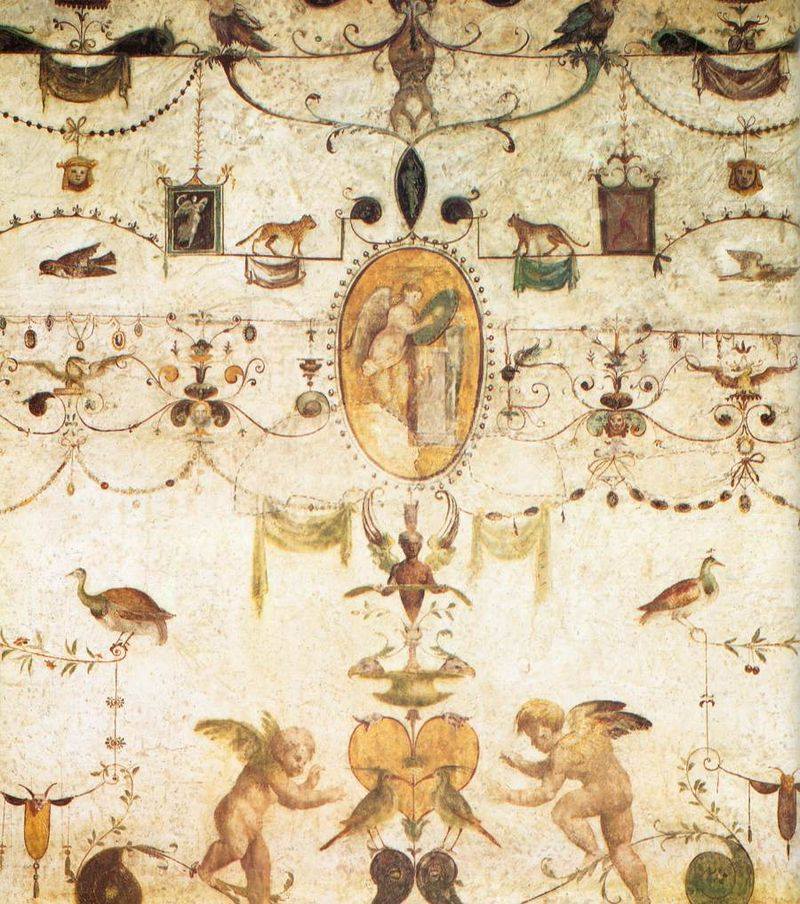What is a grotesque decoration
What is a grotesque decoration
The courtyard Michelozzo projected in 1453 was upset in 1565, one century later, when Francesco I married Giovanni d'Austria. It was embellished with fifteen landscapes decorations of the Austrian Empire to honour Giovanna, Massimiliano's brother the Austrian Emperor.
The vaults of the cpurtyard were decorated with grotesques, following the old Roman style. This particular and strange representations made of monsters, vegetal and floral motifs, hybrid creatures was discovered for the first time in Rome at the end of the XV century: a man fell accidentally in a grotto completely decorated in a similar way. Anybody knew it was Nerone's house! Immediately Filippino Lippi, Domenico Ghirlandaio, Raffaello studied and reproduced a similar decoration for their works of art and soon it became the typical Renaissance representation.
This is the reason why you find grotesques in Florentine museums: in the Uffizi gallery, in Boboli garden, in Palazzo Vecchio and so on.
On the left the courtyard of Palazzo Vecchio: you can visit it with us!! On the 1st of July a guided tour inside Palazzo Vecchio! We will visit together even the tower built by Arnolfo di Cambio...Don't miss it!!
Altri articoli

The Chapel of Mary Magdalene
In the same period Seymour Kirkup, the historian who financed works in the chapel of Mary Magdalene, was the owner of Dante's mask now preserved inside Palazzo Vecchio.

Santa Reparata and its precious remains
Santa reparata was destroyed only at the end of the XIV century when works for the edification of the new one were going on.

The stone of the outrage
From 1282 priors were representatives of the seven Major guilds: they fighted against the old aristocratic families revenging an active role of trade in Florence.

Michelangelo and the secret room.
The artist drew even his self-portrait depicting the attitude of an imprisoned man.



